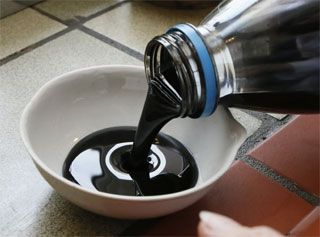 Oil prices, which have come off sharply in the past few months, recently bounced a bit to around $61 a barrel (Brent crude).
Oil prices, which have come off sharply in the past few months, recently bounced a bit to around $61 a barrel (Brent crude).
However, leading brokerages believe prices are going to rise by December 2016, though they could see some fall from current levels by the end of the current calendar year.
Bloomberg says the 2015 average crude oil target price of 10 leading global brokerages polled recently is $58.8 a barrel, four per cent lower than Wednesday’s $61.
This is likely to rise to $74.6 a barrel in 2016 (see table).
However, there are some sharp contrasting projections as well, with both sides having good justifications too.
While some brokerages believe that oil prices could fall sharply, others feel it is an exaggeration.
“Talk of excess production is being overplayed.
"The world was only marginally oversupplied in 2014/15. As oil falls below $70 a barrel, higher cost producers will start to trim output.
"We believe demand will start responding to lower prices. China is already starting to fill its boots on lower prices,” write analysts at CLSA in a recent report.
Of the 10 analysts polled by Bloomberg, only four expect it to end 2015 at below $60 a barrel, with the rest factoring in $60-67.
The lowest forecast is $51, a 16.8 per cent downside from current levels. The highest forecast of $66.9 is 9.1 per cent higher.
Brokerages, though, are not ruling out further downsides in the short term.
“We remain cautious on near-term oil prices, given the excess supplies and tepid growth in demand.
Budget 2015: Complete Coverage
"Any return of Libyan or Iranian oil would add further downward pressure on prices, with the prospect of declines below $40 a barrel,” believes Nic Brown of Natixis.
For 2015, though, the brokerage expects crude to be $60 a barrel and move up to $74.5 in 2016.
Citigroup agreed with this, earlier in the month.
“Oil production in the US is still rising. Brazil and Russia are pumping oil at record levels, and Saudi Arabia, Iraq and Iran have been fighting to maintain their market share by cutting prices to Asia.
"The market is oversupplied, and storage tanks are topping out. A pullback in production isn’t likely until the third quarter,” wrote Edward Morse, Citigroup’s global head of commodity research in a recent report, says Bloomberg news.
He believes crude could fall to $20 in the short term. For 2015, though, he predicts $54 a barrel.
Which of the sides is right, only time will tell.

Meanwhile, weak prices (below the $100 a barrel witnessed over recent years) are a big positive for India.
Oil imports are a third of the country’s total import bill and weak crude prices would improve its current account and fiscal account deficits.
Both retail and wholesale inflation could move lower by 20-50 basis points for every $10 a barrel fall in crude prices, estimate analysts.
Sector-wise, banking and financials will benefit significantly from lower prices, as lower inflation and improved liquidity could strengthen the case for rate cuts, which in turn can improve credit demand.
Crude and crude derivatives form key inputs for fast moving consumer goods, tyre and paint companies, beside reflecting on other energy prices like coal.
Among potential gainers could be Hindustan Unilever, Asian Paints, Apollo Tyres, MRF, Godrej Consumer and many more. A decline in crude prices could benefit such companies in the form of higher margins/higher demand if they pass the benefits to end-users.
The automobile sector will witness improved demand momentum, as lower fuel prices reduce the cost of owning and maintaining automobiles.
The impact is mixed for oil and gas companies.
While state-run upstream (Oil and Natural Gas Corp, Oil India) as well as downstream (Indian Oil, Bharat Petroleum, Hindustan Petroleum) companies will reap the benefits of lower underrecoveries and subsidy burden, the realisations of private upstream companies (Cairn India, Reliance Industries) will be hit due to lower crude prices.












 © 2025
© 2025